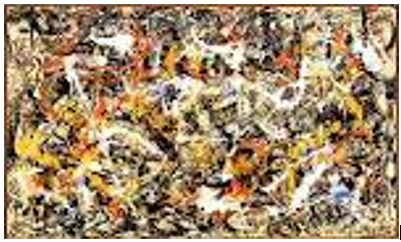Jackson Pollock is an innovative painter whose artistic works are presented in an expressionist manner. His paintings are always saturated with splashes of unexpected colors that swallow the viewers’ attention and make them go deeper into their observations. While analyzing his work called Convergence, the difficulty of interpretation and impossibility to predict motifs provides fresh insight into the innovative development of history painting in the second half of the past century.
One of the most persuasive arguments in favor of this judgment is the fact that Pollock’s techniques allow accepting the canvas as a flow of artistic energy shaping a frenetic surface. The second reason for assigning uniqueness to the painting is confined with the ability of the painter to combine and embrace different colors to convey the motion, depth, and stillness at the same time.

According to Cohn (2008), the uniqueness and innovative techniques used by Pollock provide a glance into an in-depth meaning of the painting itself. Indeed, the artists’ work is not based on concrete motifs from life, but highlight the actual purpose of painting being a sophisticated mixture of lights, shadows, forms, and colors. Hence, Cohn (2008) describes the way Pollock paints, “…dipping a long stick into a gallon can of house paint, he let the drips fall where they may as he danced around the outstretched canvas lying on the floor, making patterns guided by instinct alone” (p. 101).
To support the idea, Emmerling (2003) emphasizes that “Pollock figured as a prime representative of a Western art that permitted freedom of individual expression, in contrast to the regimented, party-line art practiced behind the Iron Curtain” (p. 86). Overall, the presented painted fits into the era when the Expressionist movement sought to oppose the limited outlooks on art and expression.
References
Cohn, S. (2008). Why We Look at Art, What Happens When We Do. US: Dog Ear Publishing.
Emmerling, L. (2003). Jackson Pollock: 1912-1956. US: Taschen.